Theme: Accessibility :
Accessibility for the Disabled - A Design Manual for a
Barrier Free Environment |
 Previous : Next Previous : Next |
V. IMPLEMENTATION CHECKLISTS
ANTHROPOMETRICS (part 1 of 2)
|
Dimensional data varies from one person to another, and the
average dimensions vary from one country to another. The dimensions of the individual
human being vary with time. The tables below provide a range of dimensions derived from
various studies (see Comparative Tables). The given measurements
take into consideration size variation between males and females as well as between
different persons of the same sex. Wheelchair Dimensions (fig.1)
Dimensions shown in the figure are of a conventional manual wheelchair. The larger,
encircled dimensions refer to electric wheelchairs. |
|

Fig.1
|
Dimensional data to a normal person (fig. 2)
| Height |
1.50 m - 1.90 m |
| Eye |
1.40 m - 1.75 m |
| Shoulder |
1.20 m - 1.55 m |
|
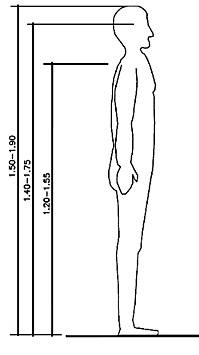
Fig. 2
|
Dimensional data of a wheelchair user
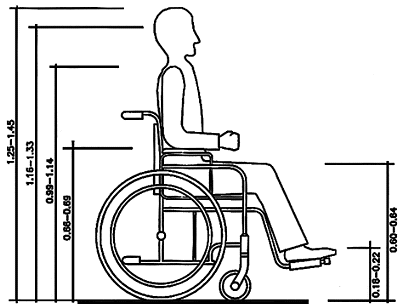
Fig. 3
|
Reaching zones of a normal person (fig. 4)
| Max. Reach Up |
1.85 m - 2.10 m |
| Oblique Reach Up |
1.65 m - 2.00 m |
| Forward Reach |
1.30 m - 1.45 m |
|
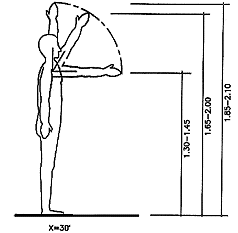
Fig. 4
|
Vertical reaching zones of a wheelchair
user

Fig. 5
|
Horizontal forward reach of a wheelchair user (fig. 6)
| Eye |
1.16 m - 1.33 m |
| Shoulder |
0.99 m - 1.14 m |
|
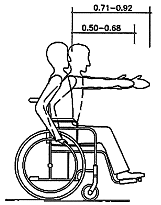
Fig. 6
|
Common reaching zone
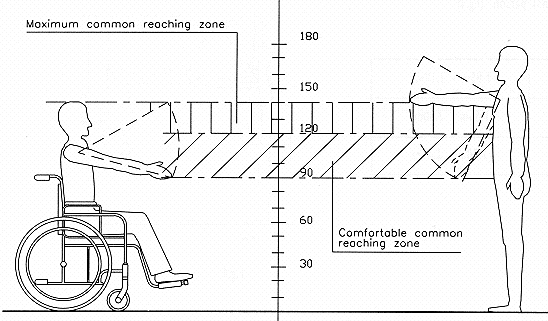
Fig. 7
|
|
 Previous : Next Previous : Next |



